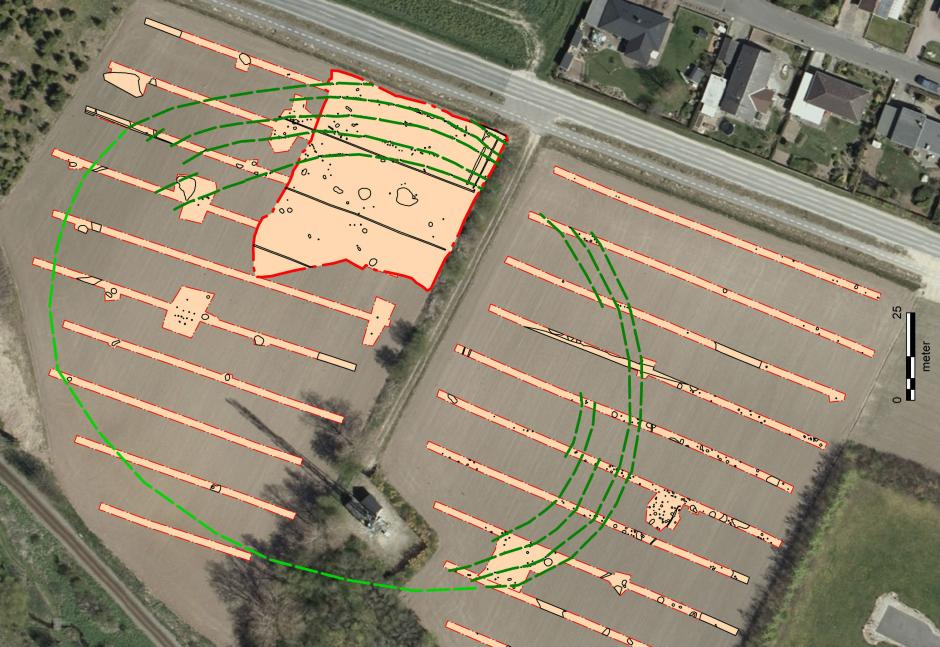Archaeologists have found a large enclosure dating back to neolithic times at Rødvig on Stevns in eastern Zealand. The enclosed oval area measures around 18,000 square metres.
So-called palisades have been found in other places in Denmark, many of them in eastern Zealand but also on Bornholm and possibly on Falster.
“It’s incredible even to me, who has been an archaeologist for some years now, that we can still find this kind of large construction from the Neolithic Period. There are many different suggestions as to what it could have been used for, but basically, we don’t know” Pernille Rohde Sloth, the archaeologist and leader of the excavation from Museum Southeast Denmark, told videnskab.dk
Here comes the sun
In 1988, a large palisade construction was found on Vasagårds Mark at the southern end of Bornholm, and within the enclosed space was a sun temple complete with sun symbols. Another one was found a little further southeast on the island at Rispebjerg.
Finn Ole Sonne, the chief archaeologist at Bornholm’s Museum, would not rule out the possibility that the enclosure on Stevns might reveal a similar find.
“It could easily also have had a ritual purpose. It wouldn’t surprise me if it was a temple area. Something must be enclosed within it, and I think that temples have been more widespread than we’ve seen so far.”
By a motorway
In 2000, in connection with the installation of a new motorway ramp along Holbæk motorway, a palisade was discovered in Høje Taastrup. Archaeologists have only had a chance to excavate it in 2016.
Although no sun temples have yet been found, a large quantity of arrowheads were, which archaeologist Lotte Sparrevohn from Kroppedal Museum suggests were used in ritual battles.
This palisade seems to be roughly contemporary with the one in Stevns. “I think I can see some similarities regarding the openings in the rows,” said Lotte Sparrevohn.
Still a mystery
Up until now, Sloth’s team in Stevns has so far excavated only a small part of the enclosure, finding post-holes and a number of pits. The pits contained numerous flint flakes, and some also held ceramic sherds and axe fragments.
The site’s artefacts are believed to be roughly 4,900 years old, but have not yet been radiocarbon dated. No precise dating for the palisade enclosure has yet been determined either.
So, intriguing though it is, the mystery does not look like being solved in the immediate future, as unfortunately there is insufficient funding available to excavate the rest of the area at Stevns.
















